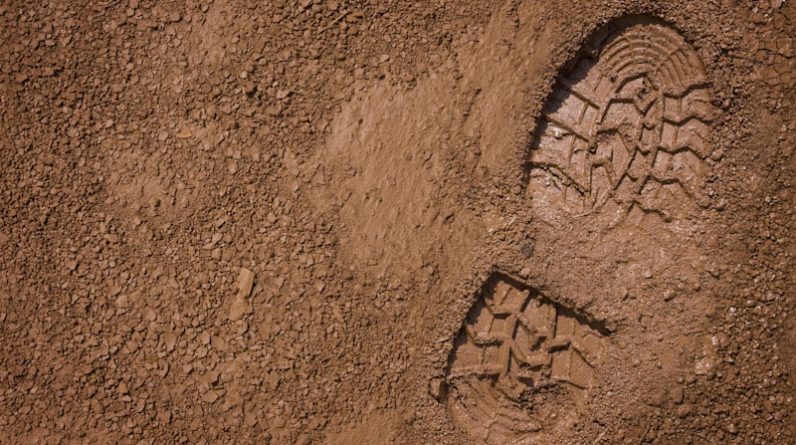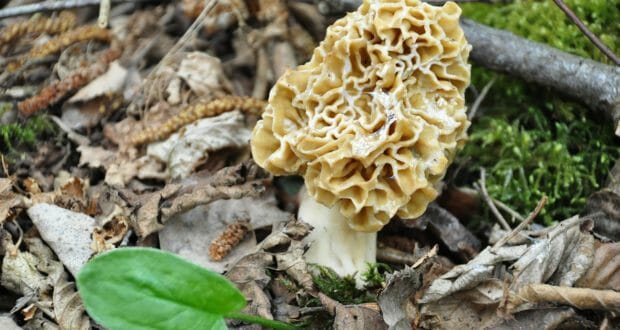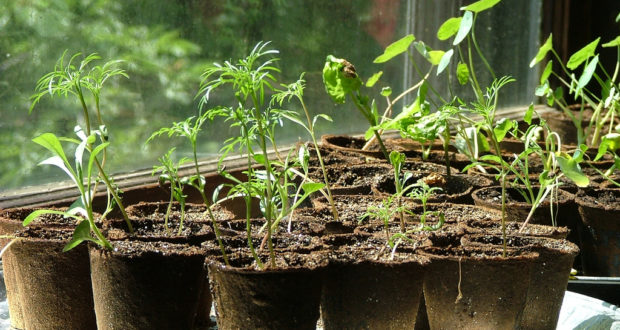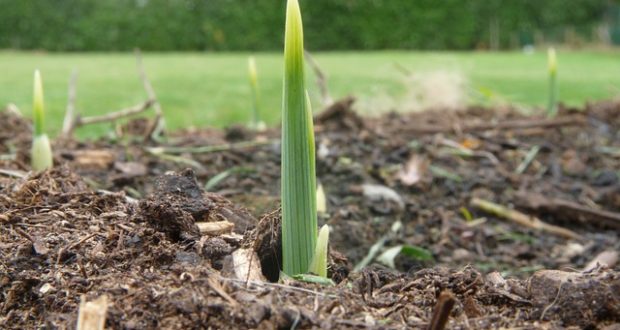In 2016, I was introduced to the concept of occultation, also known as tarping, during a visit to a friend’s farm in Oregon. My friend employed tarping as a method of weed control and season extension, which gave him a significant advantage over his neighbors.
The process of tarping involves covering crop beds with tarps, which warms the soil and eradicates spring-emergent weeds much earlier than conventional methods. As a result, my friend was able to bring his produce to market before his competitors, giving him a head start in sales.
Later that year, I had the opportunity to put my knowledge of tarping into practice through our participation in a project aimed at producing food for the local food pantry network. This collaboration provided the perfect opportunity to apply what I had learned from my research on tarping, as it involved producing crops on a market-garden scale. It was a valuable experience that allowed me to see the practical applications of tarping in a real-world setting.
The adoption of tarping in agriculture varies depending on various factors such as local climate, soil type, and the crops being grown. Tarping is a relatively new technique in agriculture, and its use may be more widespread in certain regions, but it is not limited to those regions and can be used in any state where it is deemed beneficial for the agricultural process.
I was convinced it worked
During that project, I obtained a 100-by-24-foot silage cover that has been in use ever since. Despite being worn, it has served its purpose well for several years. This silage cover allowed me to prepare the fields for food production in the spring without the need for manual weeding or a tractor. This enabled us to provide fresh summer vegetables to our community in need with minimal expenses and a team of volunteers with limited experience.
Our experiment made it evident that there was much more for me to learn about utilizing tarps effectively on a farm site. And so, I began searching for a location where I could observe experts in the use of this tool and expand my knowledge.
In 2018, we had the chance to attend a farm tour in California. The owners of this thriving Community Supported Agriculture operation had become recognized advocates and speakers for no-till farming and made extensive use of tarps on their market farm. They refined the tarping technique and generously shared their insights on the timing and duration of tarping.
As I have a strong inclination towards repurposing materials to prevent them from ending up in the landfill, I expanded our tarping options by acquiring 14-by-48-foot recycled billboards from a store that was planning to dispose of them. These tarps provided me with the means to manage the large-scale projects I had designed in my permaculture design classes, including a 1-acre forest garden, cropping areas, and orchard, without the environmental impact, costs, and maintenance associated with using a tractor and farming implements.
It appears that I am not the only one exploring alternative methods to mechanical cultivation. Several colleges on the East Coast are conducting research on tarping as a crucial tool in no-till agriculture. They regularly host webinars and discussions on this and related topics online. The following are five tasks that can now be achieved with tarps instead of relying on a tractor.
Earn Your Food Independence NOW
Weed control
Traditionally, weed control with a tractor involves either mowing or spraying. However, mowing necessitates repeated maintenance, which causes soil compaction, takes time, and consumes fuel. On the other hand, spraying involves handling, cleaning, and storing chemicals and equipment safely to use herbicides.
With tarping, it is simply a matter of observing when the first flowers appear, signifying the start of seed formation, then placing a tarp over the area and securing it using one of several methods. With only a few exceptions, weeds are defeated by the darkness under the tarp and eventually die. This is where tarping truly shines as the dead weeds become food for earthworms and soil shredders.
These worms transport the nutrients from the weeds into their burrows, where they are readily accessible to root systems looking to absorb them. The worms then transform the weed biomass into a layer of moist, nutrient-rich castings, all while being protected from the elements, birds, and other predators by the tarp.
Once the tarp has done its job, simply roll it back to reveal a weed-free surface that has been micro-fertilized and is ready for planting. The process is simple: roll out the tarp, wait for a few weeks, and then roll it up and plant. The tarping of weeds before seed formation depletes the soil’s seed load over time, and after two years, few of the targeted weeds will emerge.
Cover crop termination and nutrient cycle
The utilization of fava beans in overwintering our crop beds plays a crucial role in our soil biology and nutrient cycling strategy. These beans provide ample nitrogen to restore what was consumed during the previous growing season. Furthermore, they sustain the soil biology that relies on root secretions and keeps it thriving throughout the winter, enabling it to quickly activate when new crops are planted in spring. The migration of mycorrhizal fungi between crop roots and cover crop roots is seamless and continuous.
The issue with winter cover crops is ending them at the right time so that they fully decompose and provide nutrients for spring planting. During winter, which is typically the wettest season, it can be hard to access fields with a roller crimper or other crop termination tool. Instead, we cover the growing cover crop with tarps, letting the darkness end the crop and providing a warm and protected environment for decomposers to transform the nutrient-rich biomass into worm cheese
To speed up the decomposition process, we shred the cover crop with a battery-powered string trimmer before covering it, which can shorten the time by a week or more.
Seed-bed preparation
When you roll back the tarp, you are presented with a lush layer of newly formed worm castings. The roots of last year’s crop and the fava beans, complete with their nitrogen-generating nodules, are still in place and contribute to this micro-manure that also includes the root zone of the crops. This type of bioturbation serves as a harrow to create a seed bed, obviating the need for a tractor at a time when it would not be appropriate to use one in the field.
Removal of invasive species
Eliminating invasive plants can be a challenge, especially when they grow in dense thickets on steep hillslopes and creek sides, making it difficult to remove them with a tractor brush hog. Mowing the vegetation creates a large pile of flammable material and stimulates the root system. Tarping provides a solution to this issue. Simply covering the intact plant, or snipping the main canes with loppers, and securing the tarp with old tires effectively stops the growth of these plants.
During the wet season, the vegetation decomposes quickly under the tarp. We usually carry out this project in the fall before the winter rains. In the spring, new growth may emerge from the roots, but cutting off the new canes will weaken the plant. In some cases, it may take a couple of years for the roots to die, but the size of the returning plants will become manageable, and with another season, they can finally be eliminated.
I recommend using hemp-based tarps
To fully ensure the sustainability of tarping, the material used for the tarps must be considered. Currently, most tarps are made of plastic, but this can be changed by utilizing alternative fabrics made from hemp.
In New Hampshire, there is a push to revive the hemp mills that once supplied the ropes and sails for maritime trade. Given that a significant amount of research into tarping in regenerative agriculture is taking place in the Northeast, it’s not surprising that researchers there are seeking to use traditional materials to drive innovations that can bring farming back to its sustainable roots.
Hemp-based tarps are typically made using a combination of hemp fiber and natural materials such as flax or cotton. The fibers are woven together to create a durable and long-lasting material that is suitable for use as a tarp.
The specific process for making hemp-based tarps can vary depending on the manufacturer and the desired characteristics of the final product. However, the general steps involved in the process might include cleaning and processing the hemp fibers, spinning the fibers into yarn, weaving the yarn into fabric, and finishing the fabric by adding features such as grommets or reinforced corners for added strength and durability.
The longevity of hemp-based tarps depends on several factors, including the quality of the hemp fiber used, the weaving process, and the amount of usage the tarp receives. In general, hemp is known for its durability and strength, and when used in tarps, it can last for several years with proper care and maintenance.
Other uses for tarps
Besides the examples provided in this article, tarping can be used for a variety of purposes. Some other applications include:
- Weed suppression: Tarps can be used to cover weeds growing in the fields and smother them, reducing the need for herbicides.
- Moisture conservation: Tarps can be used to cover the soil to retain moisture, especially in arid regions where water is scarce.
- Mulching: Tarps can be used to cover crops such as strawberries and other low-growing crops to conserve moisture, suppress weeds, and regulate soil temperature.
- Composting: Tarps can be used to cover compost piles to retain heat and moisture, promoting decomposition.
- Crop protection: Tarps can be used to cover crops, such as strawberries, during heavy rain and wind events to prevent damage to the crops.
- Livestock shelters: Tarps can be used to create makeshift shelters for livestock during inclement weather.
These are just a few of the many potential uses for tarps in agriculture, and their versatility and low cost make them a valuable tool for farmers and gardeners alike.
Concluding
Tarping is a crucial tool for those who aim to reduce the expenses, upkeep, and carbon impact of using a tractor. With the increasing fuel prices globally, tarping offers the ability to cultivate crops and manage land without relying on petroleum or intricate supply chains, providing comfort and leading towards a sustainable way of life similar to that of our forefathers who pioneered the land.





![10 common plants you can turn into flour [Part I] 6 shutterstock 374664940 edited](https://modernsurvivalknowledge.com/wp-content/uploads/2024/04/shutterstock_374664940_edited-796x445.jpg)
![10 common plants you can turn into flour [Part II] 8 shutterstock 376265131 edited](https://modernsurvivalknowledge.com/wp-content/uploads/2024/04/shutterstock_376265131_edited-796x445.jpg)


